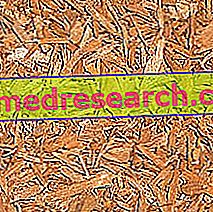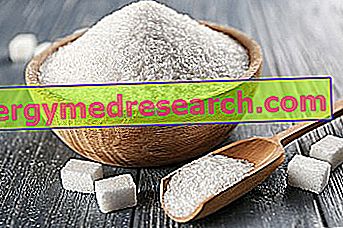
Scientific name
Corynanthe yohimbe
Family
Rubiaceae
Origin
Africa (Forests of Gabon, Cameroon, Congo)
Used Parts
The "vegetable drug" consists of the dried bark of the trunks and / or branches. It has been used for over 70 years in the treatment of erectile dysfunction, before the advent of PDE-5 inhibitors such as sildenafil (Viagra) or tadalafil (Cialis).
Chemical constituents
- Contains 0.3-1.5% of total alkaloids, the main of which is yohimbine which is due to the effect.
Yohimbe in Herbalist: Property of Yohimbe
The alkaloids present in the plant are responsible for a block of alpha-adrenergic receptors, so in addition to the aphrodisiac action, yohimbine seems to have hypotensive power and is nonetheless a vagolytic similar to atropine, with local anesthetic properties similar to those of cocaine.
Yohimbine is the only natural drug approved by the FDA for the treatment of impotence and can only be administered under medical prescription (dry extract titrated in yohimbine, 5 mg of yohimbine three times a day).
The active dosage is 0.5-10 g / day for the vegetable drug, while for the active ingredient, yohimbine chloride, it corresponds to 5.4 mg 3 times a day.
Biological activity
As mentioned, yohimbine and alpha-yohimbine contained within yohimbe are able to interact with alpha-adrenergic receptors. More specifically, these molecules exert a blocking effect against alpha-2 adrenergic receptors and perform a weakly antagonistic action against alpha-1 receptors.
With the blockade of alpha-2 receptors, the bioavailability of norepinephrine increases. Thanks to the antagonist action on alpha-1 receptors, however, these molecules seem to exert a hypotensive activity.
Furthermore, at high concentrations, it appears that yohimbine is also able to interact with neurotransmitter receptors such as dopamine and serotonin.
The aphrodisiac action traditionally ascribed to the plant, on the other hand, appears to be exerted by yohimbine through a mechanism of action that involves excitation of the lumbo-sacral portion of the spinal cord. However, although many support its therapeutic efficacy in counteracting erectile dysfunctions in particular, there is not a sufficiently adequate number of clinical studies able to confirm the aforementioned property.
However, the use of yohimbe has not received official approval for any kind of therapeutic indication.
Yohimbe in folk medicine and homeopathy
In folk medicine, yohimbe is used as an aphrodisiac remedy; as well as being used in the treatment of states of tiredness and debilitation.
Yohimbe is also used in homeopathic medicine, where it can be found in the form of granules and oral drops.
In this context the plant is used in case of male impotence, erectile dysfunction and to promote the secretion of breast milk after delivery.
The amount of homeopathic remedy to be taken can vary from one patient to another, also depending on the type of disorder that needs to be treated and depending on the type of preparation and homeopathic dilution that is intended to be used.
Side effects
After taking yohimbe arterial hypertension, tremors, insomnia, palpitations, anxiety and allergic skin reactions may appear.
Contraindications
Avoid using yohimbe in case of hypersensitivity to one or more constituents and in patients with schizophrenia, anxiety-depressive syndromes, insomnia, arterial hypertension, ischemic heart disease, gastroduodenal ulcers, liver and / or kidney diseases, chronic inflammation of the prostate and / or sexual organs.
Furthermore, the use of the plant is also contraindicated in pregnancy, during lactation and in children under 12 years of age.
Pharmacological Interactions
- tricyclic antidepressants;
- phenothiazines;
- chlorpromazine;
- clonidine: inhibition of antihypertensive activity due to receptor antagonism;
- thyroxine;
- synephrine;
- ephedrine;
- caffeine;
- naloxone.
Warnings
In Italy yohimbe is included in the list of herbs not allowed in food supplements; therefore, products containing it are not (legally) available on the market.
The use of the plant or its active ingredient is only possible through the doctor's prescription.



